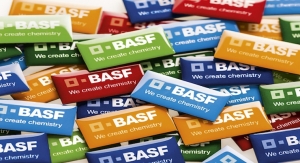04.29.19
The global thermoplastic polyurethane elastomers market surpassed US$2.5 billion in 2018, and a new study estimates revenues to grow at 5.4% in 2019. According to the study, increasing demand for TPU elastomers in emerging economies of Asia Pacific excluding Japan (APEJ) continues to create sizeable opportunities for manufacturers. APEJ continues to hold over 50% share of TPU elastomers globally.
Analyzing the key factors that are fuelling TPU elastomers demand in APEJ, the study reports that the strong presence of leading chemical companies along with increasing penetration of small- and medium-scale companies remain key growth drivers. Increasing investments by top-tiered players and rapidly-growing end-user industries continue to attract investments by market leaders, finds the study.
The study also assesses the business and product strategies of key players in the TPU elastomers market. Investments and expansion in Asia Pacific continue to be a key focus for stakeholders in the TPU elastomers market. BASF’s investment in Expanded Thermoplastic Polyurethane (E-TPU) Infinergy at Changhua, Taiwan, and The Lubrizol Corporation’s investment in Songjiang (Shanghai) China plant are indicators of the growing prominence of APEJ among stakeholders.
Environmental Concerns Trigger Manufacturing Innovations
The study finds that although TPU elastomers have been witnessing incremental demand across versatile industrial applications, meeting the evolving sustainability requirements continues to be a challenge for stakeholders. Negative impacts of thermoplastics on the environment have been restricting manufacturers from exploring new niche applications. Thereby, leading stakeholders in the TPU elastomers market have been focusing on innovating their manufacturing strategies and technologies to discover biocompatible and biostable TPU elastomers. According to the study, the focus on finding sustainable solutions is also driven by stringency in environmental regulations. In many countries of APEJ, environmental regulations have become more stringent over the years, and manufacturers have had to adapt to the changing status-quo.
Some notable examples include:
- In March 2019, Lubrizol International, Inc. announced the launch of a new, toluene-free Pearlbond TPU for films and adhesives, to expand its high-melt strength Pearlbond TPU portfolio. Toluene exposure can have a hazardous impact on the environment as well as human health. The company announced that the new Pearlbond TPU is toluene-free and recyclable, thereby environment-friendly, and it can be used in various applications such as furniture, footwear, automotive films, and apparels;
- In February 2019, A.P.I. Applicazioni Plastiche Industriali SPA – an Italian chemical company – announced the launch of the new recyclable TPU APILONTM52 A/C-series. The company declared that the new portfolio of its TPU elastomer products reduces the production cycle time by around 70% while significantly cutting the energy consumption and production costs;
-
In October 2018, Covestro AG – a German stakeholder in the TPU elastomers market – discovered a new carbon dioxide (CO2)-based technology for manufacturing environmentally-friendly TPU elastomers. With growing concerns about ecological fallout, Covestro established partnerships with research institutes and other companies to boost the use of CO2technology as a synthesis platform for the large-scale production of TPU elastomers.
The study tracks developments in the TPU elastomers market for the assessment period 2019-2027. According to the study, the TPU elastomers market is expected to envisage impressive growth at a CAGR of 5.9% during the assessment period.















